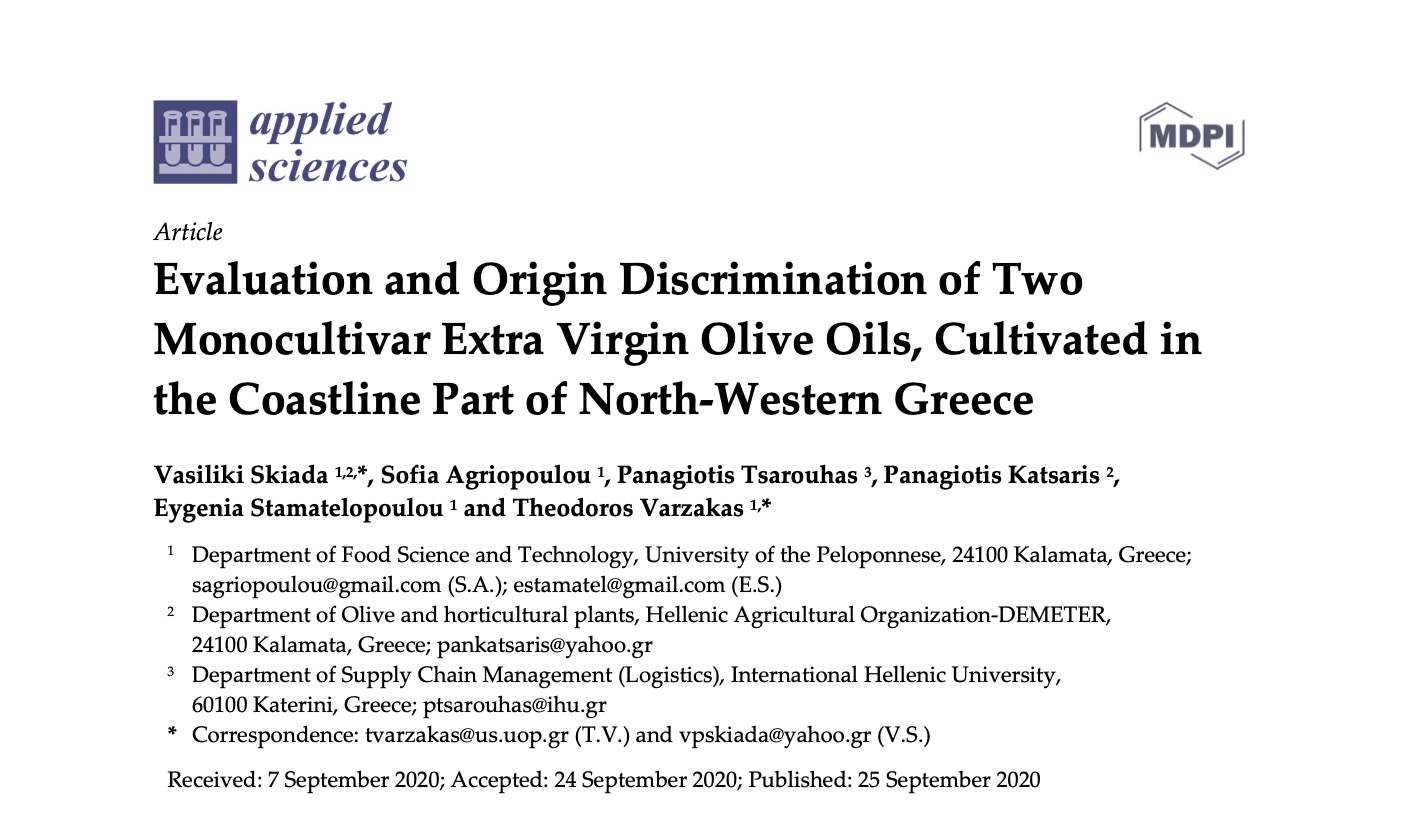Abstract:
Extra virgin olive oil (EVOO) quality and authenticity are important and challenging factors nowadays for the assurance of consumers’ protection, prevention of unfair competition, and disruption of the national economy by a false declaration of origin. Hence, the recognition of EVOO authenticity is of great interest in terms of commercial and quality aspects. The objective of this study was to evaluate and discriminate monovarietal extra virgin olive oils of the two dominant olive cultivars, Lianolia Kerkyras and Koroneiki, produced in the coastline part of Western Greece, based on their chemical characteristics, followed by statistical and chemometric analysis in order to profile for the first time the typical characteristics of Lianolia Kerkyras as well as to identify possible markers for authenticity purpose. A total of 104 olive oil samples were collected. Both cultivars had an overall high quality profile as far as their basic qualitative parameters (free fatty acid, peroxide value, and UV spectrometric indices) are concerned. A higher concentration in the mono‐ unsaturated oleic acid characterize olive oils of cv. Koroneiki compared to cv. Lianolia Kerkyras, while a clearly higher concentration in the poly‐unsaturated linoleic acid was observed in olive oils of cv. Lianolia Kerkyras. In addition, olive oil samples of cv. Koroneiki showed a clear lower total sterols concentration with a percentage of 40.9% not surpassing the required EU Regulatory limit of 1000 mg/kg, an observation which strengthens previous published results of our research group and depicts an overall “intrinsic characteristic” of cv. Koroneiki. As far as the profile of the individual sterols is concerned, Lianolia Kerkyras samples exhibited higher mean value for the total sterol content as well as for β‐sitosterol, the major phytosterol in olive oils, compared to the relative values of Koroneiki. Significant differences in the sterolic and fatty acid composition of the examined olive oil samples were shown by means of statistical analysis demonstrating a strong botanical effect and depicting that those compositional markers can be suggested as possible authenticity tools.

